Autism Center Grab and Go Resource Gallery of Interventions
Graphic Organizers
Consider developing a graphic organizer (GO) as a teaching and learning tool that is used to organize information and ideas in a way that is easy to comprehend and internalize. By integrating text and visuals, graphic organizers show relationships and connections between concepts, terms, and facts. They help visualize or present information in a way that is easier to comprehend by breaking down larger or complex concepts or ideas into smaller, simpler parts. GO's help individuals actively contribute and participate in the learning process; help develop cognitive skills, such as brainstorming, critical and creative thinking, categorizing and prioritizing content, reflection, and help recall prior knowledge about a subject and quickly connect it to new information.
Examples
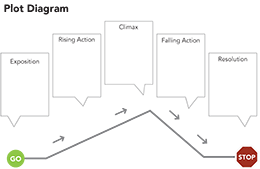
Graphic Organizers
- Five WH Questions Chart - Blank Template
- Five WH Questions Chart - School Dance
- Graphic Organizers - 4 Ws Worksheet
- Graphic Organizers - Cause and Effect
- Graphic Organizers - Mind Map
- Graphic Organizers - Plot
- Graphic Organizers - Plot Diagram
- Graphic Organizers - Popcorn
- Perspective Taking Chart - Blank Template
- Perspective Taking Chart - Family Example
- Perspective Taking Chart - School Example
Videos
Using a Graphic Organizer with a Variety of Different Learners
How To: Graphic Organizer
This tutorial video shows how to use a graphic organizer for a student with autism.
Using Graphic Organizers to Support Students with Disabilities
This video shows how using graphic organizers can support students with disabilities.
Book Suggestions
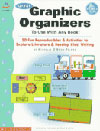
Great Graphic Organizers to Use with Any Book!
Scholastic
50 Fun Reproducibles & Activities to Explore Literature & Develop Kids' Writing. Help students learn about plot, character and setting while becoming motivated readers and writers. Includes 50 versatile projects and activities to use with any book, student samples, step-by-step directions and ready-to-go graphic organizers.
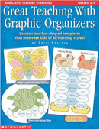
Great Teaching with Graphic Organizers
Scholastic
This one-of-a-kind book gives you full-page, reproducible graphic organizers that are designed to exercise a particular thinking skill. Want kids to elaborate? Use the Butterfly Shape! Teaching cause and effect? Kids can organize their thinking with the Spider and the Caterpillar. Sample lessons show you how to use graphic organizers in language arts, science, social studies and math'¹for planning, thinking, writing and more. 25 adorable templates to choose from. Sample student work and classroom snapshots show you how to make the most of these powerful learning tools.
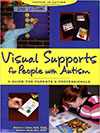
Visual Supports for People with Autism: A Guide for Parents & Professionals
Cohen, M. & Sloan, D.
This guide presents an abundance of examples, illustrated by dozens of black & white and color photos, including: activity schedules; calendars; charts; checklists; color coding; flip books; graphic organizers; mnemonics; nametags; photo boards; Power Cards; scripts; Social Stories; to-do lists; and video modeling.
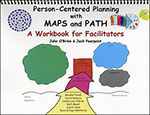
Person-Centered Planning with MAPS and PATH
O'Brien, J. & Pearpoint, J., et al.
The person-centered approach that uses graphic organizers creates a team of people who know and care about the individual with a disability, who come together to develop and share a dream for the person's future, and who work together to organize and provide the supports necessary to make that dream a reality. Among the person-centered planning approaches are Making Action Plans, known as MAPS and Planning Alternative Tomorrows with Hope, known as PATH. Although each of these approaches has unique features, they share a number of basic values and strategies.